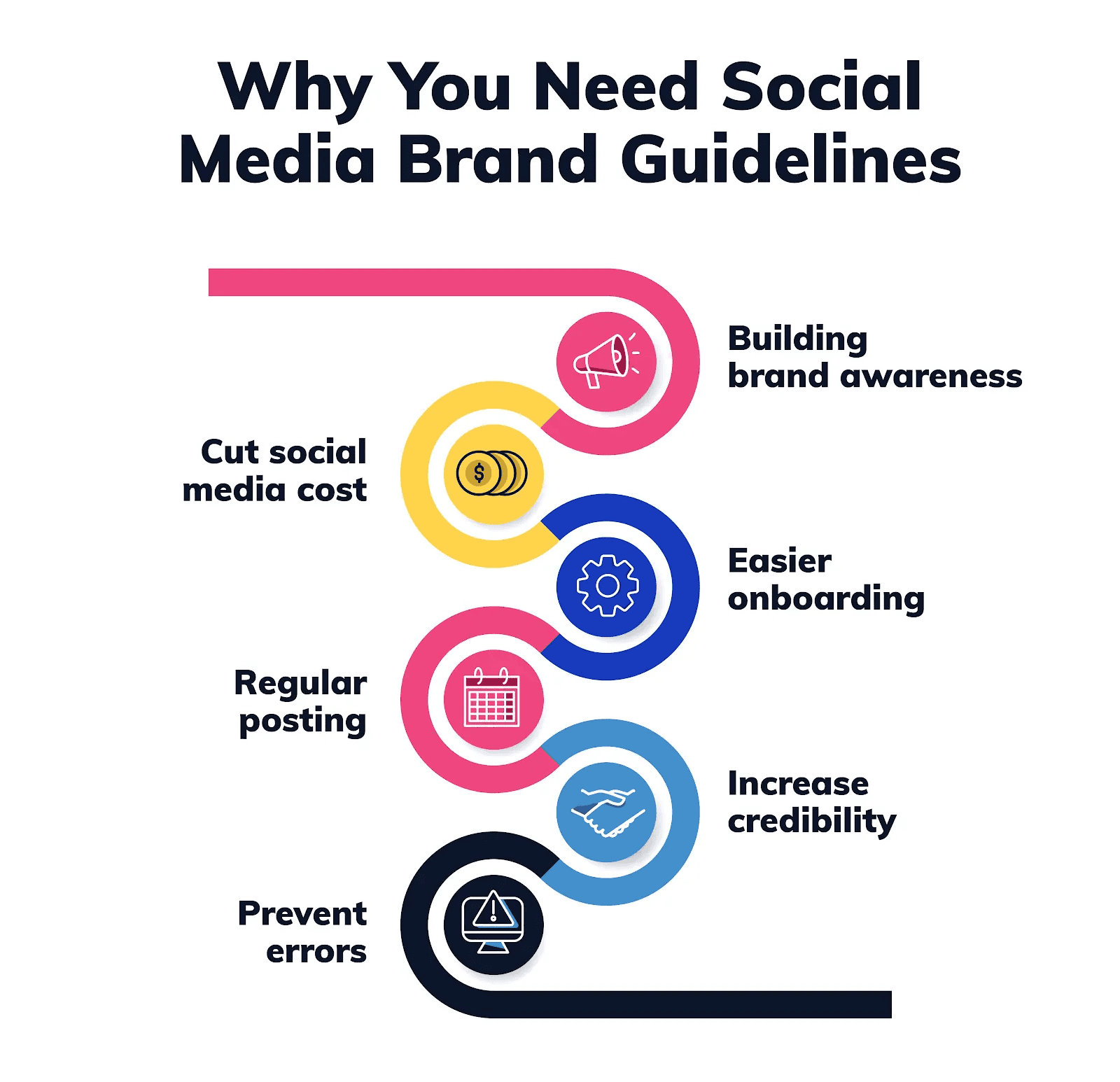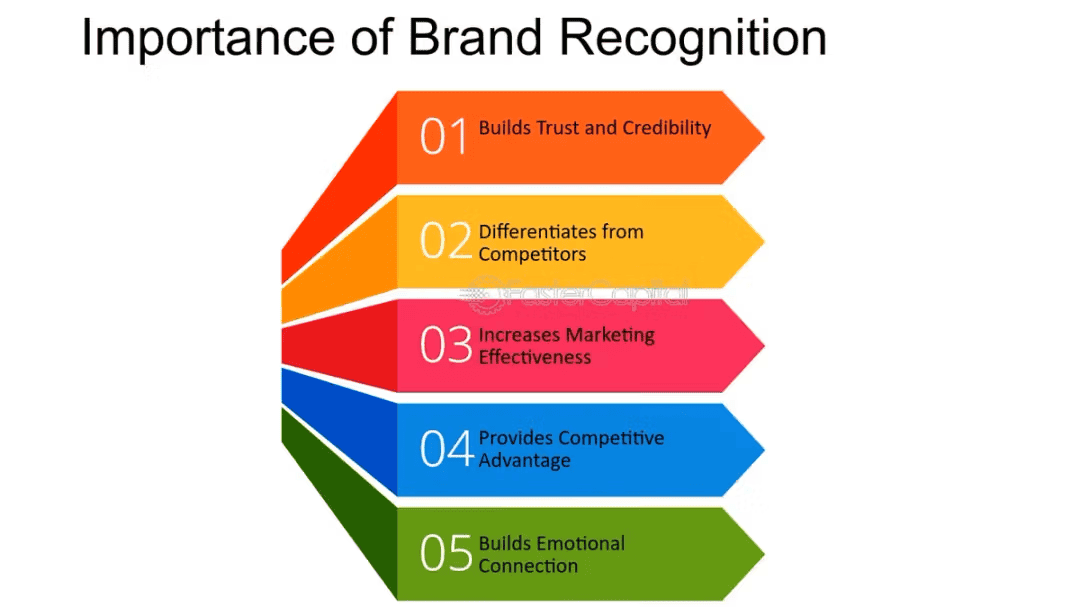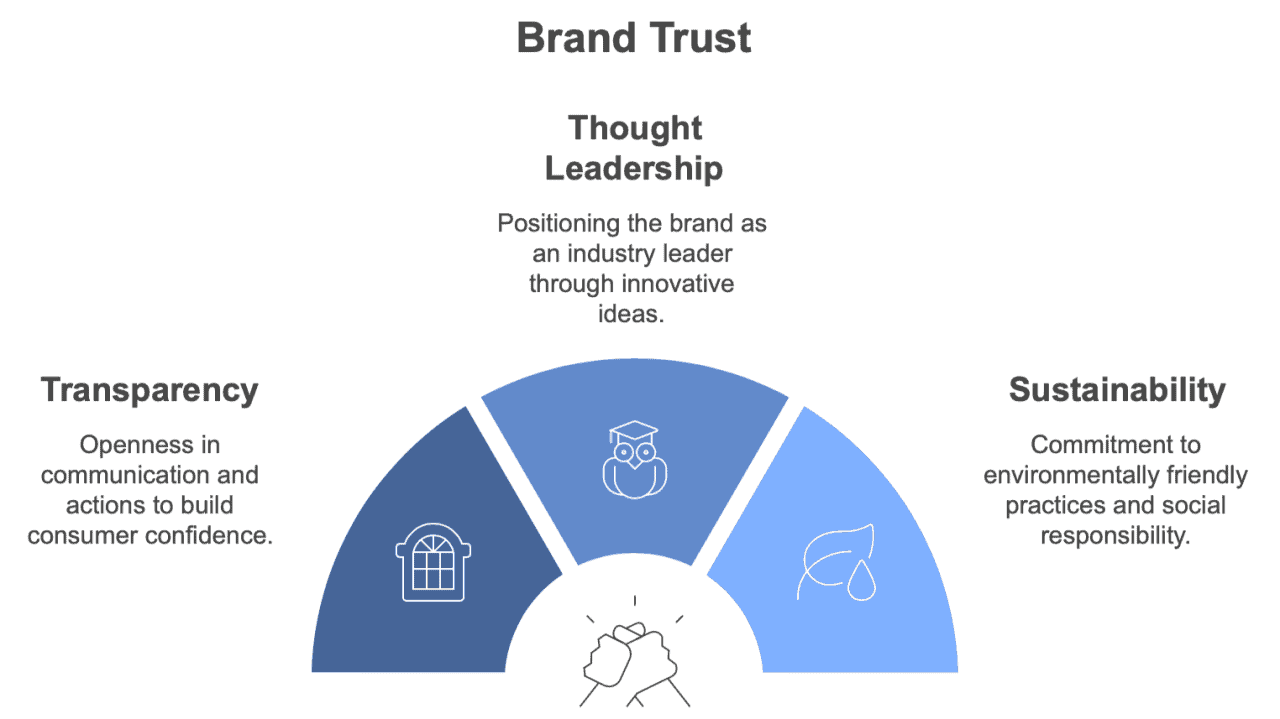In today’s always-on digital era, where attention spans are shorter than ever, effective social media branding has become one of the most powerful tools for establishing credibility and creating meaningful connections online. Whether you’re a global corporation, a small business, or a personal brand, your online presence is often the first impression you make — and in branding, first impressions can last a lifetime.
Social media isn’t just about posting updates or collecting likes; it’s a dynamic ecosystem where brands communicate their values, mission, and personality to the world. With over 4.8 billion social media users globally, your potential audience is vast — but so is your competition. What sets successful brands apart is their ability to build trust and recognition through consistency, authenticity, and engagement.
A strong brand presence on social platforms goes beyond flashy visuals and catchy slogans. It’s about forming emotional bonds with your audience — bonds rooted in transparency, shared values, and genuine communication. When users believe in your brand, they don’t just follow you; they advocate for you, recommend your products, and become part of your brand’s story.
Social media branding also humanizes your business. It gives your brand a voice, a face, and a story. By sharing behind-the-scenes content, celebrating milestones, and responding to feedback, you transform your brand from a logo into a living entity that audiences can relate to. This emotional accessibility fosters trust — a key ingredient in any successful digital strategy.
Moreover, building recognition online involves strategic consistency. Your tone of voice, color palette, and visual elements should remain uniform across all platforms to ensure familiarity. When your content, from your visuals to your logo design, aligns visually and emotionally, your audience can instantly recognize your posts without even seeing your name or logo. This level of brand recognition creates subconscious loyalty that can last for years.
In essence, effective social media branding is a blend of art and strategy. It’s about expressing who you are while consistently delivering value to your audience. The brands that thrive online are those that communicate with empathy, listen actively, and stay true to their core identity — all while adapting to new trends and technologies.
As we move deeper into the digital age, one truth remains constant: people don’t just buy products; they buy trust. And social media, when used effectively, is the bridge that connects your brand’s values with your audience’s emotions.
Why Social Media Branding Matters in Today’s Digital World
Social media branding allows companies and individuals to connect directly with their audience in real time. Unlike traditional advertising, these interactions are two-way, offering transparency and authenticity that consumers crave. People don’t just buy products—they buy stories, missions, and values. When a brand consistently delivers meaningful interactions, it builds emotional connections that translate into trust and advocacy.
The Psychology Behind Online Trust and Recognition
Trust is the foundation of brand loyalty. When users see consistent visuals, authentic messages, and genuine engagement, they perceive the brand as credible. Recognition, on the other hand, stems from repetition—consistent exposure to logos, colors, tone, and messaging across all social platforms creates familiarity. Over time, that familiarity fosters comfort and trust, making customers more likely to choose your brand over competitors.
Understanding the Core Elements of Social Media Branding
Defining Your Brand Identity: Voice, Values, and Vision
Your brand identity should clearly define who you are, what you stand for, and why you exist. Start by articulating your brand’s mission and core values. Decide on your tone—are you professional, playful, or inspirational? This voice should be reflected across every post, reply, and campaign. A consistent brand voice strengthens recognition and reinforces your message.

Choosing the Right Social Media Platforms for Your Brand
Not every platform suits every brand. Instagram and TikTok thrive on visual storytelling, while LinkedIn caters to professionals and thought leadership. The key is to align your brand’s goals with the platform’s audience. For instance, a lifestyle brand might prioritize Instagram for its visual appeal, whereas a B2B company would find more traction on LinkedIn or Twitter (now X).
Visual Consistency: Colors, Logos, and Design Language
A strong visual identity is non-negotiable. Use consistent colors, fonts, and imagery that reflect your brand personality. This design uniformity should extend to your profile pictures, banners, story highlights, and even the style of your posts. Visual consistency not only boosts recognition but also reinforces credibility and professionalism.
Building Trust Through Authentic Engagement
Creating Valuable, Honest, and Relatable Content
People follow brands that add value. Share content that educates, entertains, or inspires. Transparency—like behind-the-scenes training videos, product development updates, or staff highlights—makes your brand more human and relatable. Avoid overly polished, sales-driven content; instead, focus on connection and storytelling.
Leveraging Transparency and Storytelling
Storytelling transforms facts into emotions. Whether you’re sharing your brand’s journey, customer testimonials, or milestones, storytelling builds emotional resonance. Brands like Patagonia and Dove thrive because they connect their values with relatable human stories, making audiences feel part of their mission.
How to Handle Negative Feedback with Integrity
No brand is immune to criticism. The key is how you respond. Acknowledge the issue publicly, offer a solution, and handle the matter respectfully. This demonstrates accountability and transparency—two key pillars of online trust. Ignoring or deleting negative feedback often does more harm than good.
Strategies to Strengthen Brand Recognition Online
Collaborations, Influencer Marketing, and Brand Advocacy
Partnering with influencers or like-minded brands can expand your reach and credibility. Influencers already have trust-based relationships with their followers, and their endorsement can significantly boost your recognition. Choose partners whose values align with yours to ensure authenticity.
Maintaining Consistent Posting and Brand Messaging
Consistency builds familiarity. Develop a content calendar that balances promotional, educational, and engaging posts. Regular posting shows your audience that your brand is active and reliable, which strengthens recognition over time.

Using Analytics to Monitor Brand Perception
Social media analytics tools such as Sprout Social, Hootsuite, or Google Analytics help measure engagement, reach, and sentiment. Understanding how your audience interacts with your content allows you to fine-tune your strategy for optimal results. Strong CRM collaboration between marketing and sales teams ensures those insights translate into more cohesive branding and communication efforts.
Advanced Techniques for Long-Term Brand Trust
User-Generated Content (UGC) as Social Proof
Encourage customers to share their experiences with your products or services. UGC acts as digital word-of-mouth—an authentic, powerful form of endorsement that builds social proof and trust.
Community Building and Active Engagement Tactics
Brands that nurture communities enjoy higher loyalty. Create groups, host live sessions, or engage in meaningful conversations with followers. Building a community transforms customers into brand advocates.

Leveraging Social Responsibility and Sustainability Efforts
Modern consumers value brands that care. Demonstrating social responsibility—whether through charitable initiatives, eco-friendly practices, or transparent financial services like apartment building financing that supports community development—enhances credibility and strengthens emotional bonds with your audience
Case Studies: Brands That Mastered Social Media Branding
Nike’s Storytelling and Emotional Connection
Nike has mastered the art of emotional storytelling on social media. The brand’s campaigns—like “Just Do It” and “Dream Crazy”—are not product-centric; they’re human-centric. By highlighting athletes’ stories, struggles, and triumphs, Nike connects emotionally with audiences across demographics.
Their strategy focuses on three pillars: authenticity, empowerment, and inspiration. This emotional branding approach has turned Nike from a sportswear company into a symbol of motivation and perseverance.
Key takeaway: Tell stories that move people emotionally, not just promote products.
Glossier’s Community-Driven Approach
Glossier built its brand almost entirely through user-generated content and community engagement. The company listens to customer feedback and incorporates it into product development, making followers feel seen and valued. On Instagram, Glossier regularly features real users rather than models, reinforcing inclusivity and authenticity.
This participatory branding strategy creates trust—customers see themselves in the brand.
Key takeaway: Empower your audience to be part of your brand story.
Common Mistakes to Avoid in Social Media Branding
Over-Promotion and Lack of Authenticity
One of the biggest branding pitfalls is turning your feed into a nonstop sales pitch. While promoting products is important, excessive self-promotion alienates followers. Users want value—education, entertainment, or emotional connection—not constant advertisements.
Authenticity must always come first. A brand that prioritizes connection over conversion naturally earns trust and recognition.
Ignoring Audience Feedback and Analytics
Many brands overlook valuable insights from comments, reviews, and analytics. Failing to respond to your audience—or not adapting your strategy based on data—creates a disconnect.
Analytics reveal what’s working and what’s not. Ignoring them is like sailing without a compass—you might be active, but you’re not going anywhere meaningful.
Measuring the Success of Your Social Media Branding Efforts
Key Metrics: Engagement Rate, Reach, and Brand Mentions
To gauge the impact of your branding strategy, focus on three core metrics:
Engagement Rate: Likes, shares, comments, and saves reveal how much your audience interacts with your content.
Reach and Impressions: These indicate how many users see your content and how often.
Brand Mentions and Sentiment: Monitor how people talk about your brand. Positive sentiment signals growing trust and recognition.
Regularly track these metrics to identify trends and measure your brand’s growth trajectory.
Tools for Social Media Brand Tracking
Several tools can help streamline your analysis:
- Hootsuite: Tracks performance across multiple platforms and provides engagement reports.
- Brandwatch: Monitors sentiment and brand mentions in real-time.
- Google Analytics: Connects social performance with website traffic.
- Sprout Social: Offers detailed analytics for engagement, impressions, and response rates.
Integrating these tools helps you refine your strategy for maximum effectiveness.
(For a deeper dive into social analytics tools, check out Sprout Social’s analytics guide).
FAQs About Effective Social Media Branding
1. What is the main goal of social media branding?
The primary goal is to build trust, loyalty, and recognition by creating a consistent, authentic presence that connects emotionally with your target audience.
2. How often should I post on social media for branding purposes?
Consistency is key. Aim for at least 3–5 quality posts per week per platform, focusing on engagement rather than sheer volume.
3. How can small businesses build brand trust online?
Small businesses can build trust by being transparent, responsive, and personal. Sharing behind-the-scenes content and customer stories helps humanize the brand.
4. Is influencer marketing still effective for brand building?
Yes—when done authentically. Partner with influencers whose values align with yours to ensure genuine endorsements and audience trust.
5. How long does it take to establish strong brand recognition online?
Typically, it takes 6–12 months of consistent effort to develop solid recognition, depending on your strategy, audience, and niche.
6. What’s the biggest factor that destroys trust on social media?
Inconsistency and dishonesty. Misleading content, fake engagement, or ignoring customer concerns can severely damage your brand’s credibility.
Conclusion: The Future of Trust and Recognition in Digital Branding
As the digital world continues to evolve, one thing remains undeniable — effective social media branding is no longer just a marketing tactic; it’s a long-term investment in your brand’s reputation, credibility, and community.
Building trust and recognition online is a journey, not a destination. It takes consistent effort, honest communication, and a willingness to evolve alongside your audience. In a time where consumers are constantly bombarded with choices, the brands that stand out are those that stand for something. Authenticity, transparency, and genuine engagement are no longer optional — they are the currency of online trust.
Your brand’s voice, visuals, and values must all work in harmony to create a cohesive identity that audiences instantly recognize and emotionally connect with. Whether through powerful storytelling, consistent design, or responsive engagement, every touchpoint on social media should reflect who you truly are and what you believe in. This consistency doesn’t just make your brand memorable; it makes it believable.
The future of social media branding belongs to brands that prioritize relationships over reach. Building a large following means little if it isn’t accompanied by meaningful interaction. True success lies in cultivating communities — spaces where customers feel heard, valued, and empowered to engage. The more authentic your interactions, the stronger your audience’s loyalty becomes.
Additionally, the role of ethical and purpose-driven branding is becoming increasingly significant. Consumers today seek brands that share their values and take responsibility for social and environmental impact. By aligning your online presence with integrity, sustainability, and empathy, you position your brand not just as a seller of products, but as a force for good — a brand people can believe in and advocate for.
As artificial intelligence, augmented reality, and new digital platforms reshape how we connect, your brand’s authenticity will be your most valuable differentiator. Technology will continue to advance, but trust will always be built through human connection. It’s the sincerity behind your words, the transparency in your actions, and the consistency in your message that will define your brand’s legacy.
So, as you refine your social media strategy, remember this golden rule: people don’t remember the content you post — they remember how your brand made them feel.
Make your audience feel inspired, appreciated, and understood, and they’ll reward you with something every brand desires but few truly earn — unwavering trust and lifelong recognition.

